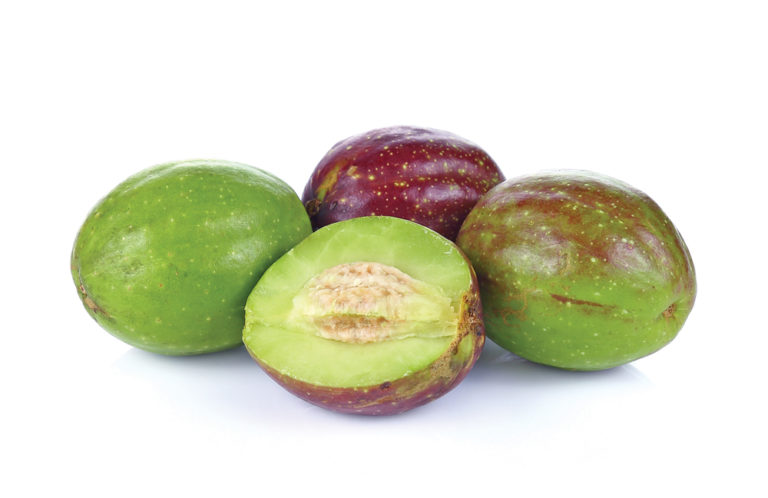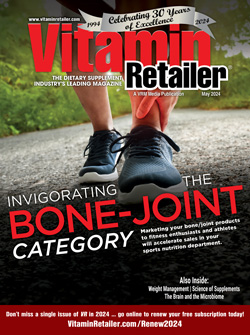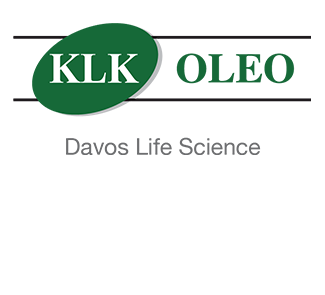An Evidence-based Ayurvedic Herb for Joint Pain/Discomfort
Whenever we see the words “joint pain” or “joint discomfort,” we immediately tend to think about nutraceuticals such as glucosamine, chondroitin, gelatin/collagen, and perhaps some herbal extracts such as boswellia or turmeric—and with good reason. These nutraceuticals all have varying degrees of research for treating arthritis-related joint pain, and represent the mainstay of joint health supplements. While this is all well and good, the fact is that there has not been much innovation in the world of evidence-based joint health nutraceuticals over the past five to 10 years. That’s why I was so interested to learn about an ayurvedic herb called Terminalia chebula.
Background
Before jumping into a discussion about T. chebula, let’s quickly review joint discomfort, which may result from various medical disorders, or simply as a result of exercise. Osteoarthritis (OA) and low back pain (LBP) are two of the most prevalent disorders associated with joint discomfort. OA is the most common form of arthritis, affecting 13.9 percent of adults aged 25 years and older and 33.6 percent (12.4 million) of those 65 and older (believed to be conservative estimate).1 Research indicates that more than 80 percent of the population will experience LBP at some time during life,2 and 69 percent of those suffering from LBP felt that it affected their daily lives.3 In addition, some people are subject to exercise-related joint pain, especially knee pain. This is true of competitive swimmers,4 workers whose jobs involve significant outdoor activity,5 and overweight and obese individuals.6
Non-prescription, conventional treatment options for joint discomfort include non-steroidal anti-inflammatory drugs (NSAIDs) and topically applied menthol or capsaicin-based creams and gels,7 although NSAIDs are associated with potentially serious adverse effects including dyspepsia, ulcers, bleeding,8,9 and increased risk of GI (gastrointestinal) complications.10 Complementary and alternative options include those nutraceuticals mentioned in the opening paragraph of this article, including T. chebula.
History & Constituents of Terminalia chebula
The fruit of the Terminalia chebula tree has been extensively used in ayurvedic, Unani and Iranian medicine, as a traditional remedy against various human ailments.11,12 Called the “King of Medicine” in Tibet, T. chebula is one of the herbs at the top of the list in Materia Medica of ayurveda due to its extraordinary healing power. Demonstrated pharmacological activities for T. chebula include antioxidant, antimicrobial, anti-diabetic, hepatoprotective, anti-inflammatory, anti-mutagenic, anti-aproliferative, radio protective, cardio protective, antiarthritic, anti-caries, gastrointestinal motility and wound healing.13
The phytochemical constituents of T. chebula fruit include tannins, steroids/sapogenins, saponins, anthraquinone derivatives and flavonoids.14 The tannins are most prevalent at 32-45 percent.15 One specific T. chebula fruit extract, AyuFlex (Natreon Inc., New Jersey), which has been the subject of much research, has a phytochemical profile that includes ≥39 percent low molecular weight hydrolysable tannins, with ≥29 percent chebulinic acid + chebulagic acid. Now, let’s review some of that research.
Terminalia chebula Research on Pain and Joint Discomfort
First 12-week Study
A 12-week, double-blind, placebo controlled trial16 was conducted with 100 patients who had knee joint discomfort, to evaluate the analgesic effect of T. chebula fruit (TCE, as AyuFlex), a proprietary chromium complex (Crominex, Natreon Inc.), their combination and a placebo. The patients received one of five treatments:
• 500 mg TCE, twice daily (1,000 mg total)
• 500 mg TCE, twice daily (1,000 mg total) + 400 mcg of chromium (as Crominex3+)
• 400 mcg of chromium (as Crominex3+)
• Placebo
• 250 mg TCE, twice daily (500 mg total)
Severity of knee joint pain and discomfort was assessed using: 1) a modified version of the scientifically-validated questionnaire known as WOMAC, which evaluates pain, stiffness and physical joint functioning in patients with osteoarthritis of the knee and hip, 2) the knee swelling index (KSI) which measures the degree of knee swelling, and 3) the visual analog scale (VAS), a validated questionnaire used to subjectively assessment of pain, stiffness and disability. The results showed the following percentage reductions in pain-related scores after 12 weeks (view table below).
The results were similar with the different assessment methods. Essentially, TCE 1,000 mg/day performed the best with regard to pain, stiffness and disability. After that TCE, 1,000 mg + chromium 400 performed next best, closely followed by TCE 500 mg/day. In this case, there was no advantage in using TCE with chromium. Furthermore, there were also significant improvements in pain, stiffness and disability at four weeks with TCE 1,000 mg/day.
Second 12-week Study
A second randomized, double-blind, placebo-controlled trial was conducted with 105 healthy (90 subjects completed the study), overweight men and women who had no knee joint discomfort at rest, but experienced knee joint discomfort with exercise. The subjects received 250 mg of TCE (as AyuFlex) twice daily, 500 mg TCE twice daily or a placebo. As with the previous 12-week study, mWOMAC and VAS scores were used to assess results, but this time a modified Knee injury and Osteoarthritis Outcome Score (mKOOS) was also included to evaluate short-term and long-term symptoms and function. Additional tests included a six-minute walk test for distance, and Goniometric ROM of pain-free knee flexion/extension, as well as blood tests for inflammatory markers and safety. The results were impressive. Compared to placebo, TCE treatment significantly:
• Improved mWOMAC/mKOOS global scores with 250 mg/twice daily (P<0.045)
• improved VAS scores for overall, whole-body joint discomfort with 250 mg/twice daily (P<0.003) and 500 mg/twice daily (P<0.02)
• Improved six-minute walk performance with 250 mg/twice daily (P<0.02)
• Decreased perception of post-exercise knee joint soreness with 250 mg/twice daily (P<0.002)
• Improved perception of overall, whole-body joint function with 250 mg/twice daily (P<0.03) and 500 mg/twice daily (P<0.04)
• Improved perception of low back health with 250 mg/twice daily (P<0.038)
• Improved willingness to exercise with 250 mg/twice daily (P<0.047) and 500 mg/twice daily (P<0.047)
Unlike the first 12-week study, this one showed no significant difference between the 500 and 1,000 mg/day doses, which validates the lower dose. Another surprise was the reduction in back pain.
Single-dose Study
Another double-blind, placebo-controlled study17 evaluated the analgesic (pain-relieving) activity and safety of 1,000 mg of TCE (as AyuFlex) or placebo, as a single oral dose in 12 healthy human volunteers in whom pain was induced using a mechanical hot-air pain model. Results were that TCE significantly improved pain threshold and pain compared to placebo (P< 0.001), and no adverse reactions were reported.
Related Research
Oxidative stress18,19 (i.e. from free radicals) and inflammation20,21 contribute towards OA and LBP. Consequently, research on TCE’s effect on markers for oxidative stress and inflammation helps to understand its benefits for these conditions. Randomized, double-blind studies22,23 have shown that TCE (as AyuFlex) reduces markers of oxidative stress (MDA) by as much as 13.4 percent, and markers of infla-mmation (hsCRP) by as much as 21 percent.
Research on Dogs
In addition to human research, there has also been a study24 on the effects of TCE (as AyuFlex) in moderately OA dogs. The dogs received either a placebo or 500 mg/twice daily of AyuFlex for 150 days. Physical exams, arthritic pain evaluation, joint flexibility, blood tests and x-rays were used to assess effectiveness. The results showed that dogs given TCE showed significant (P<0.01) reductions in overall pain, pain upon limb manipulation, and pain after physical exertion by 60-90 days. Maximum effects were achieved by day 150. In addition, blood tests indicated that TCE had an anti-inflammatory effect, and X-rays showed a marked decrease in cartilage damage osteophyte formation (bony outgrowths associated with degeneration of joint cartilage). By contrast, there we no significant changes in dogs treated with placebo. Finally, TCE was well tolerated and without side effects.
Conclusion
Joint discomfort may result from various medical disorders, such as OA and LBP, or simply as a result of exercise. Non-prescription, conventional treatment options such as NSAIDs are associated with potentially serious adverse effects. Nutraceutical treatment options for joint health have varying degrees of research to support their efficacy, but there has not been much innovation over the past five to 10 years. The herb Terminalia chebula has an extensive history of use in ayurveda and other cultures of traditional medicine, and the specific TCE known as AyuFlex has been the subject of human clinical research, demonstrating efficacy in reducing joint pain, stiffness and disability—this includes pain-relieving benefits for healthy people without OA. Research on OA dogs has shown similar pain-relieving benefits. In short, AyuFlex offers an innovative, evidence-based option for relieving joint pain/discomfort with 500-1,000 mg/day. VR
References:
1 Lawrence RC, Felson DT, Helmick CG, Arnold LM, Choi H, Deyo RA, Gabriel S, Hirsch R, Hochberg MC, Hunder GG, Jordan JM, Katz JN, Kremers HM, Wolfe F; National Arthritis Data Workgroup. Estimates of the prevalence of arthritis and other rheumatic conditions in the United States. Part II. Arthritis Rheum. 2008;58(1):26-35. 2 Rubin DI. Epidemiology and risk factors for spine pain. Neurol Clin. 2007;25(2):353–371.
3 American Physical Therapy Association. Low Back Pain by the Numbers (Infographic). Retrieved November 8, 2016 from http://www.moveforwardpt.com/ LowBackPain/Infographic.
4 Wanivenhaus F, Fox AJ, Chaudhury S, Rodeo SA. Epidemiology of injuries and prevention strategies in competitive swimmers. Sports Health. 2012 May;4(3):246-51.
5 Miranda H, Viikari-Juntura E, Martikainen R, Riihimäki H. A prospective study on knee pain and its risk factors. Osteoarthritis Cartilage. 2002 Aug;10(8):623-30.
6 Fowler-Brown A, Wee CC, Marcantonio E, Ngo L, Leveille S. The mediating effect of chronic pain on the relationship between obesity and physical function and disability in older adults. J Am Geriatr Soc. 2013 Dec;61(12):2079-86.
7 American Academy of Orthopaedic Surgeons. Osteoarthritis. Last reviewed: July 2007. Retrieved November 8, 2016 from http://orthoinfo.aaos.org/ topic.cfm?topic=a00227.
8 Laine L. GI risk and risk factors of NSAIDs. J Cardiovasc Pharmacol. 2006;47 Suppl 1:S60-6.
9 Larkai EN, Smith JL, Lidsky MD, Graham DY. Gastroduodenal mucosa and dyspeptic symptoms in arthritic patients during chronic nonsteroidal anti- inflammatory drug use. Am J Gastroenterol. 1987;82(11):1153-8.
10 Laine L. Gastrointestinal effects of NSAIDs and coxibs. J Pain Symptom Manage 2003;25 Suppl 2: S32-40.
11 Bag A, Bhattacharyya SK, Chattopadhyay RR. The development of Terminalia chebula Retz. (Combretaceae) in clinical research. Asian Pac J Trop Biomed. 2013 Mar;3(3):244-52.
12 Jokar A, Masoomi F, Sadeghpour O, Nassiri-Toosi M, Hamedi S. Potential therapeutic applications for Terminalia chebula in Iranian traditional medicine. J Tradit Chin Med. 2016 Apr;36(2):250-4.
13 Bag A, Bhattacharyya SK, Chattopadhyay RR. The development of Terminalia chebula Retz. (Combretaceae) in clinical research. Asian Pac J Trop Biomed. 2013 Mar;3(3):244-52.
14 Lee HS, Jung SH, Yun BS, Lee KW. Isolation of chebulic acid from Terminalia chebula Retz. and its antioxidant effect in isolated rat hepatocytes. Arch Toxicol. 2007; 81(3):211-218.
15 Kaur S, Jaggi R. Antinociceptive activity of chronic administration of different extracts of Terminalia bellerica Roxb. and Terminalia chebula Retz. Fruits. Indian J Exp Biol. 2010; 48(9): 925-930.
16 Nutalapati C, Kumar CU, Kishan PV, Kishore KK. Pingali U. A randomized, double-blind, placebo-controlled, parallel group clinical study to evaluate the analgesic effect of aqueous extract of Terminalia chebula, a proprietary chromium complex, and their combination in subjects with joint discomfort. Asian J Pharm Clin Res. May-June 2016;9(3): 264-269.
17 Pokuri VK, Kumar CU, Pingali U. A randomized, double-blind, placebo-controlled, cross-over study to evaluate analgesic activity of Terminalia chebula in healthy human volunteers using a mechanical pain model. J Anaesthesiol Clin Pharmacol. 2016 Jul-Sep;32(3):329-32.
18 Vnukov VV, Panina SB, Krolevets IV, Milutina NP, Ananyan AA, Zabrodin MA, Plotnikov AA. [Features of oxidative stress in the bold and synovial fluid associated with knee osteoarthritis]. Adv Gerontol. 2015;28(2):284-9. [Article in Russian]
19 Siems W, Bresgen N, Brenke R, Siems R, Kitzing M, Harting H, Eckl PM. Pain and mobility improvement and MDA plasma levels in degenerative osteoarthritis, low back pain, and rheumatoid arthritis after infrared A-irradiation. Acta Biochim Pol. 2010;57(3):313-9.
20 Heidari B, Hajian-Tilaki K, Babaei M. Determinants of pain in patients with symptomatic knee osteoarthritis. Caspian J Intern Med. 2016 Summer;7(3):153-161. 21 Klyne DM, Barbe MF, Hodges PW. Systemic inflammatory profiles and their relationships with demographic, behavioural and clinical features in acute low back pain. Brain Behav Immun. 2016 Oct 6. pii: S0889-1591(16)30459-7.
22 Rani, PU, Sravanti IV, Fatima N, Muralidhar N, Salomi R. Study of Terminalia chebula250mg, 500mg and Placebo in modifying cardiovascular risk with special reference to Endothelial dysfunction in patients with Type2 Diabetes Mellitus. Department of Clinical Pharmacology and Therapeutics, Nizam’s Institute of Medical Sciences, Punjagutta, Hyderabad, Andhra Pradesh, India. Unpublished; 2013:28 pgs.
23 Kishore KK, Kishan PV, Ramakanth GSH, Chandreasekhar N, Pingali U. A study of Terminalia chebula extract on endothelial dysfunction and markers of oxidative stress in patients with metabolic syndrome. EJBPS. 2016; 3(2):181-188.
24 Murdock N, Gupta RC, Vega NNm Jitra Jm Nukker Hm Giad HT, Lasher MA, Canerdy TD, Kalidindi SR. Evaluation of an aqueous extract of Terminalia chebula for anti-arthritic efficacy and safety in osteoarthritic dogs: radiographic evidence. Murray State University, Murray/Hopkinsville, KY; 2016.
Bio-Box:
Gene Bruno, MS, MHS, the dean of academics for Huntington College of Health Sciences, is a nutritionist, herbalist, writer and educator. For more than 30 years he has educated and trained natural product retailers and health care professionals, has researched and formulated natural products for dozens of dietary supplement companies, and has written articles on nutrition, herbal medicine, nutraceuticals and integrative health issues for trade, consumer magazines and peer-reviewed publications. He can be reached at gbruno@hchs.edu.








